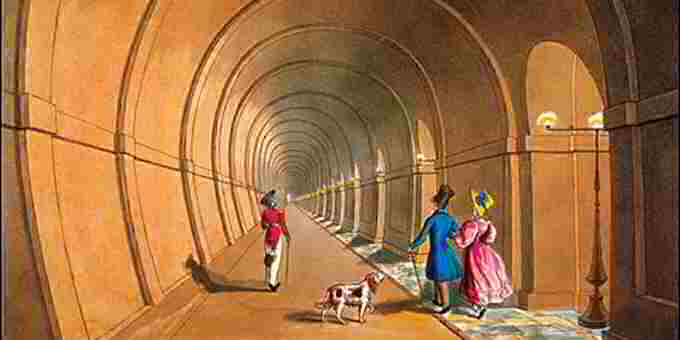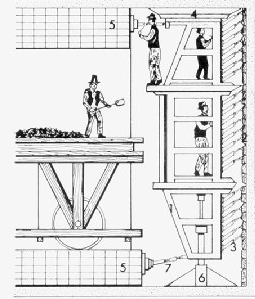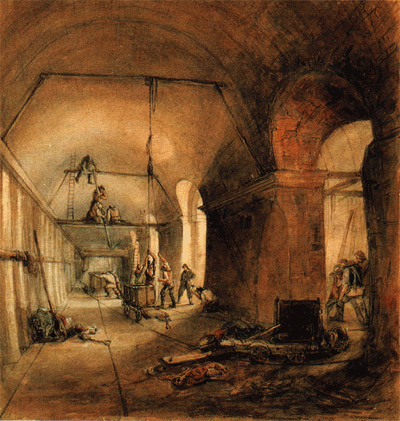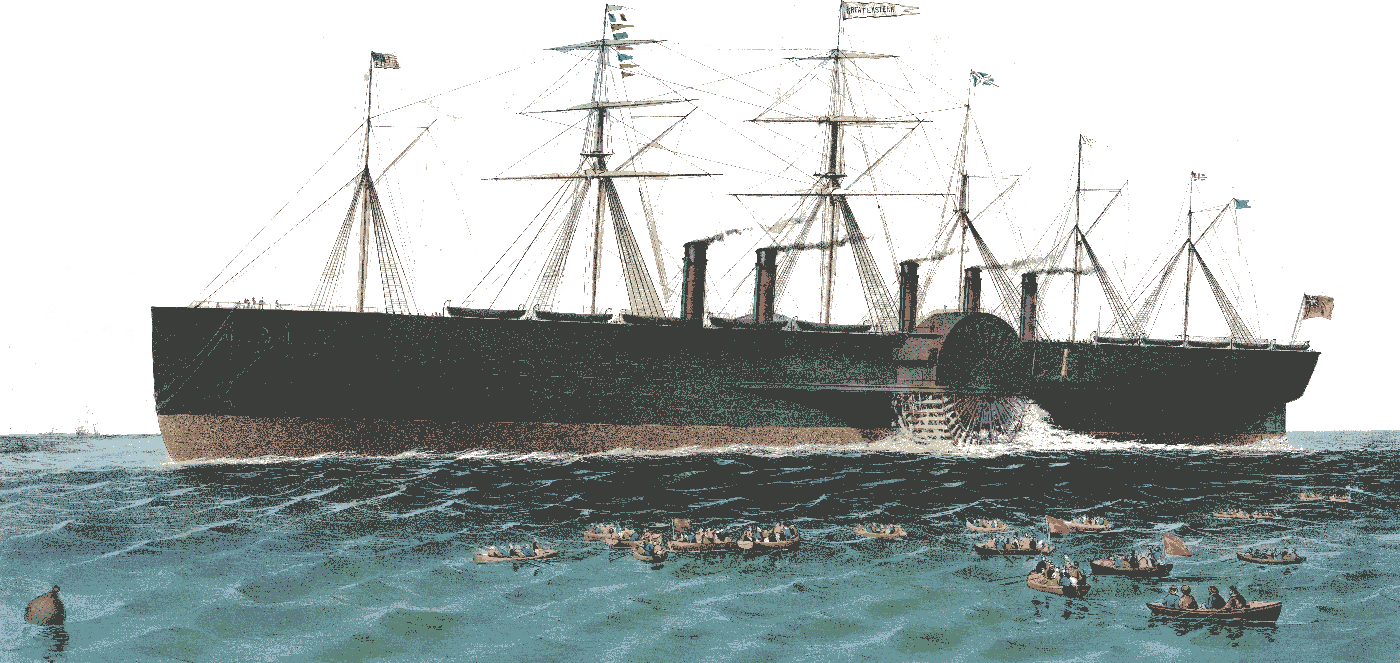Thames Tunnel

The Thames Tunnel, from Wapping to Rotherhithe was the first tunnel under a river anywhere in the world. It was designed by Marc Brunel (Isambard's father) using a revolutionary tunnel shield which he invented, comprising 36 cells in which a workman was engaged working independently of the others. Propulsion for the device was a screw which drove the device forward in 114mm/4.5in steps(the width of a brick).
The operation was started in 1825 and was halted a number of times when the river burst in and flooded the workings. Isambard Brunel was put in charge of operations, and at one time nearly lost his life in a flood. In November 1827 Marc’s son, Isambard Kingdom Brunel, organised a lavish underwater banquet in the tunnel – to help convince people that it was safe.
But the stoppages put the scheme's finances under severe strain. At one point the operation was halted for seven years and the tunnel bricked up.
When it was again started a much larger shield was used to cover the 120m/400ft of tunnel already constructed. At its lowest point construction took place only 4m/14ft below the river bed.

The Thames tunnel was eventually opened in 1843. It was of an horseshoe construction with a height of 7m/23ft and width of 11m/37ft. It had a total length of 406m/1,506ft.
In the first four months more than a million people passed through the long awaited tunnel. Although originally designed as a foot tunnel, it was eventually sold to the railways and became part of the London Underground system in 1865, a role it still performs today nearly 150 years later.
In the novel 'Is', Isabel Williams takes her friend Robert to see the Thames Tunnel. To read an extract, click here
Further Information
Back to Topics



